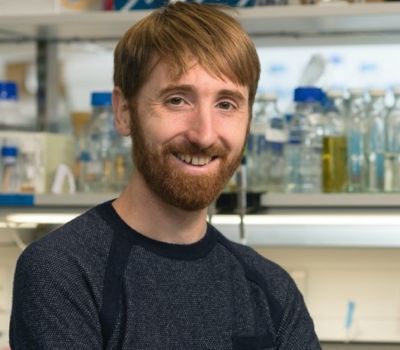The role of matrix maturation in HIV-1 infection and spread

The new project started in
3rd funding period (July 1st, 2022)
Project description – Summary
The matrix protein (MA) of HIV-1 is initially synthesised as the N-terminal domain of the main structural polyprotein Gag, and recruits Gag to the plasma membrane for virus assembly. Upon virus release, Gag is cleaved by the viral protease to cause maturation: the capsid and nucleocapsid rearrange within the virion while MA remains associated with the virus membrane. We recently determined the structure of MA within immature virus particles where Gag is intact, and within mature virus where Gag has been cleaved. MA forms a hexameric lattice in both particles, but unexpectedly the structures of the two lattices, and their lipid interactions, are different. The known functions of MA are in virus assembly, but our observations imply that rearrangement of MA is associated with a change in virus properties, and that MA is likely to have a second, post-maturation function.
The viral envelope glycoproteins (Env) have been shown to redistribute upon maturation, and Gag cleavage is required for the virus particle to become fusogenic. We will ask whether MA maturation causes rearrangement of Env to make the virus infectious and therefore regulate viral fitness during membrane fusion, entry or even cell-to-cell spread.
How is MA maturation triggered? To identify the mechanism by which MA maturation is triggered, we will perform cryo-electron tomography to determine the structure of the MA layer in a series of virus mutants and in vitro.
Finally, does the mature form of MA promote infection in the target cell? We will collaborate with Müller, Kräusslich and other groups in the SFB to monitor virus infection in the presence of mutations that alter MA maturation, to explore the influence of MA structure on infection.

Schematic illustrations of MA-MA and MA-membrane interactions during assembly and maturation. Gag in the cytosol binds RNA and assembles at the plasma membrane leading to formation of a bud. During or after virus release, the immature virus undergoes proteolytic maturation to form the mature virion. The MA-SP1 cleavage mutant may not represent a true maturation intermediate. Interactions between Gag and the plasma membrane are via PI(4,5)P2 and myristate (MYR). In the cytosol, the N-terminal myristate is sequestered in MA and RNA is bound to the highly basic region (HBR). In the assembling and immature virion, RNA is released from the HBR, while the myristate is exposed and inserted into the plasma membrane. After proteolytic cleavage between SP1 and NC, the PI(4,5)P2 head group and unsaturated 2’ acyl chain are pulled out from the plasma membrane and sequestered in a positively charged pocket on MA. In the immature MA lattice, MA trimer-trimer interactions are formed by the N-terminal domain in the vicinity of the exposed myristate moiety, while the PI(4,5)P2 binding pocket is empty. In the mature MA lattice, PI(4,5)P2 is bound to its binding pocket at the side of MA and MA trimer-trimer interactions are formed by the HBR and PI(4,5)P2.
Figure and legend taken from Qu et al, Science 2021, doi: 10.1126/science.abe6821
Further, we will perform experiments on the interactions between the HIV-1 capsid and cellular factors involved in nuclear entry, and experiments to explore structural transitions of the influenza A virus M1 protein. These projects form part of collaborative efforts within the SFB involving Lusic/Beck, Müller and Kräusslich (HIV-1 capsid) and Chlanda (influenza A M1 protein).
Project Staff
